I. Core Drive Components: Determining Cycling "Power" and "Smoothness"
A bicycle can move forward thanks to the coordinated work of its core drive components. These parts directly affect the efficiency of force application and the riding experience, so beginners should first recognize them clearly.
1. Frame: The "Backbone" of the Bicycle
The frame is the foundation of a bicycle. Just like the human backbone, it supports the weight of the entire bike and the rider. Its material, size, and structure directly determine the riding comfort, stability, and durability.
Material: Common frame materials for beginners include aluminum alloy, steel, and carbon fiber. Aluminum alloy frames are lightweight and cost-effective, making them the first choice for most entry-level models. Steel frames have high strength and provide a stable riding feel but are slightly heavier. Carbon fiber frames are lightweight and have good shock absorption, but they are more expensive and better suited for advanced cyclists.
Size: It is crucial to choose the right frame size! If the frame is too large or too small, you will have to hunch over, struggle to apply force while riding, and may even get injured. Beginners can select the frame based on their height: for example, a height of 155-165cm is suitable for a 15-16 inch frame, and a height of 165-175cm is suitable for a 17-18 inch frame (please refer to the brand's size chart for specific details).
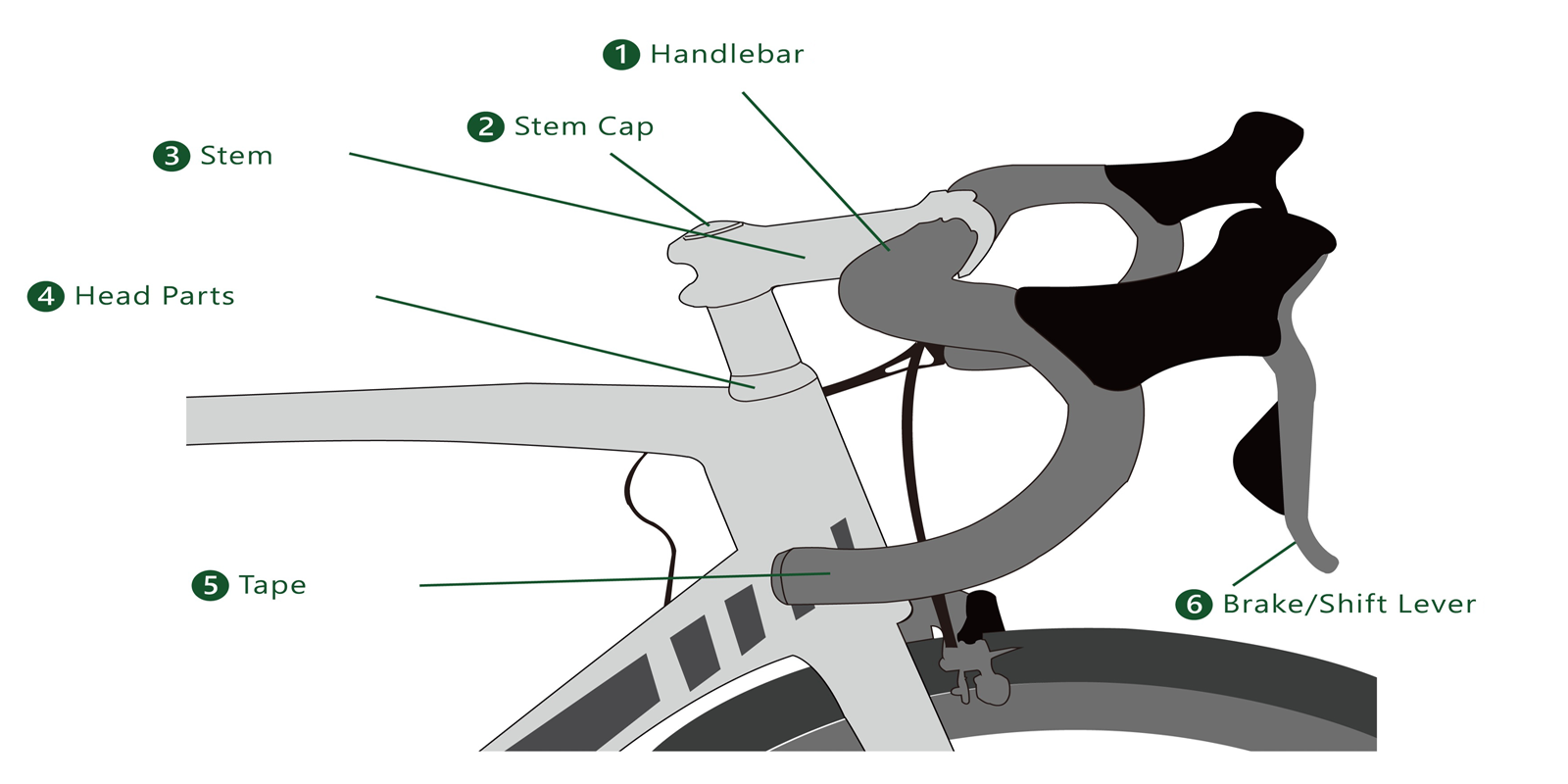
2. Drivetrain: The "Power Chain" That Makes the Wheels Turn
The drivetrain is the key to transmitting the force from your pedaling to the wheels, mainly including the chainring, chain, cassette, and bottom bracket.
Chainring: Located under the pedals, it has 1-3 discs (commonly known as "large chainring", "middle chainring", and "small chainring"). The teeth on the discs are used to drive the chain. When you step on the pedals, the chainring rotates and drives the cassette through the chain.
Cassette: Mounted on the rear wheel axle of the bicycle, it is a set of gears of different sizes. For beginners, it can be simply understood that the smaller the cassette gear, the "lighter" it feels when pedaling (suitable for accelerating on flat roads); the larger the gear, the "heavier" it feels when pedaling (suitable for climbing hills).
Chain: Connecting the chainring and the cassette, it is the "bridge" for power transmission. You should pay attention to keeping the chain clean daily to avoid rusting or jamming.
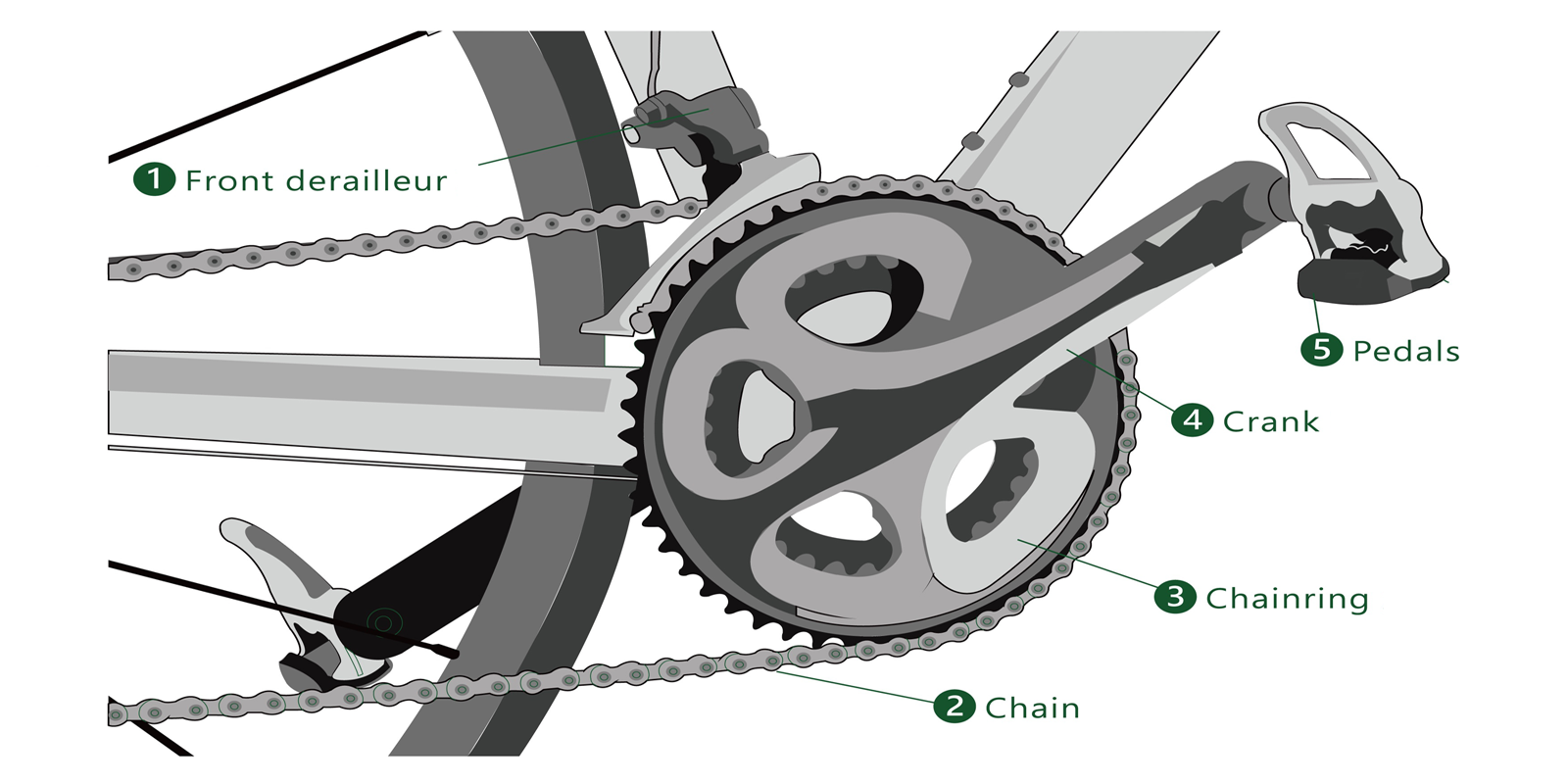
3. Wheel Set: Determining Cycling "Stability" and "Speed"
The wheel set consists of wheels, tires, and hubs. It is the core part of the bicycle that comes into contact with the ground and has a great impact on the riding experience.
Wheels: Including rims and spokes. Most rims are made of aluminum alloy. When beginners choose a bicycle, they should check whether the rims are flat and whether the spokes are tight (loose spokes will cause the wheels to "wobble").
Tires: Divided into "road tires", "mountain tires", and "urban commuting tires" according to riding scenarios. Road tires are thin and smooth, suitable for pursuing speed on flat roads. Mountain tires have thick treads, good anti-slip performance, and are suitable for off-roading or rough roads. Urban commuting tires balance anti-slip performance and comfort, making them the first choice for beginners' daily riding.
Hubs: Installed at both ends of the wheels, they are responsible for making the wheels rotate smoothly. Beginners do not need to worry about complicated parameters; they only need to feel whether the wheels rotate smoothly and whether there is any abnormal noise when rotating.
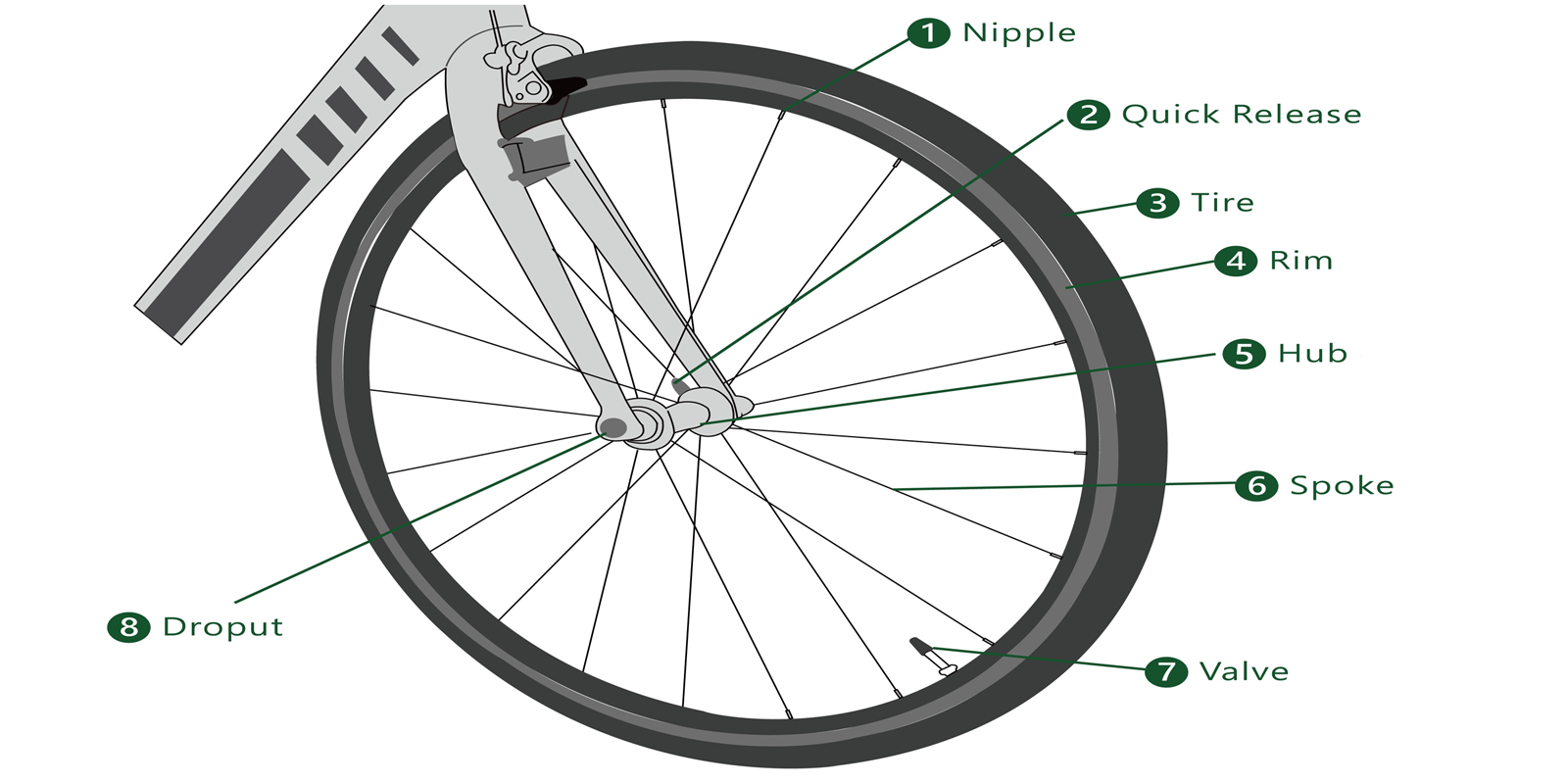
II. Safety Control Components: Guaranteeing "Braking" and "Direction" During Cycling
Safety is always the top priority in cycling. These components are directly related to your riding safety and must be focused on.
1. Brake System: The "Lifeline" of Cycling
Brakes are the most important safety components of a bicycle. The common brake types for beginners are "V-brakes" and "disc brakes".
V-brakes: Decelerate by the brake pads rubbing against the edge of the wheels. They have a simple structure, are easy to maintain, and are cheap, making them suitable for riding on dry urban roads. However, their braking effect will decrease when encountering rainy or muddy roads.
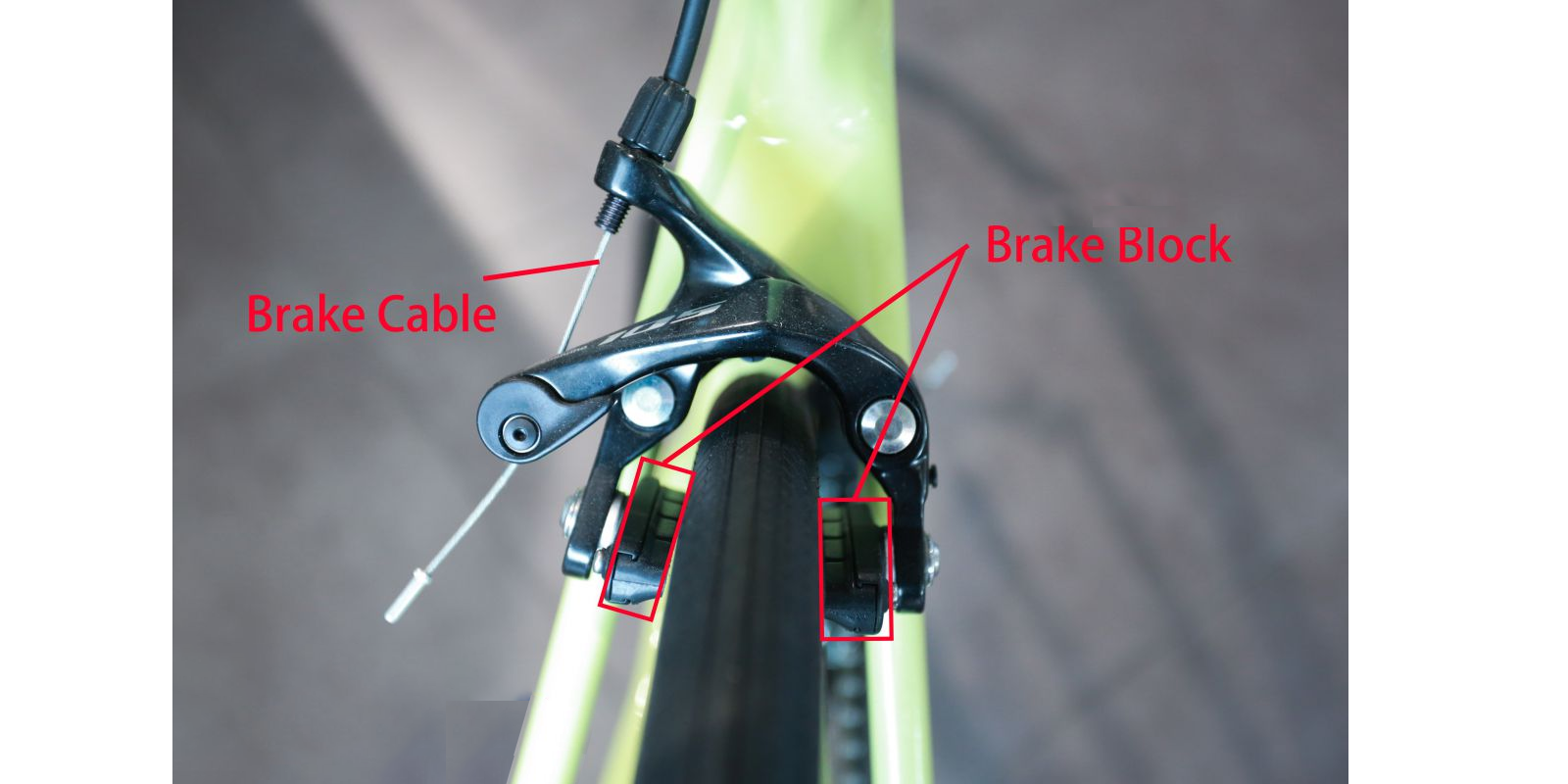
Disc brakes: Decelerate by the brake discs (installed on the hubs) and brake pads rubbing against each other, divided into "mechanical disc brakes" and "hydraulic disc brakes". The advantage of disc brakes is strong braking force and little influence from the weather; they can also brake stably on rainy days, making them suitable for beginners who often ride on complex roads.
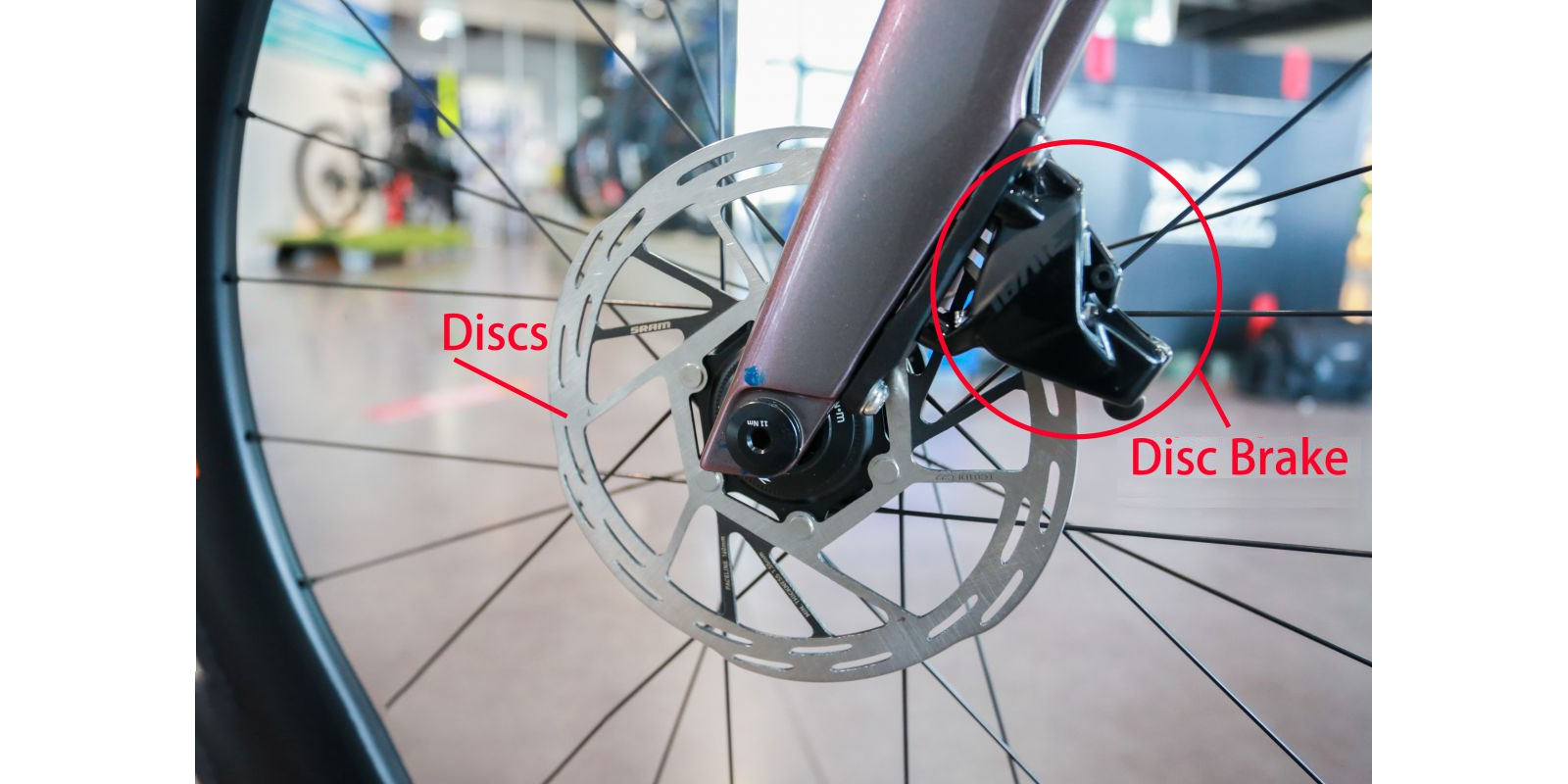
2. Handlebar and Control System: Mastering the "Direction" of Cycling
The handlebar is the core for controlling the direction of the bicycle and also integrates key components such as brake levers and shift levers.
Handlebar Types: The common handlebar types for beginners are "flat handlebars" and "drop handlebars". Flat handlebars (such as those on mountain bikes and commuter bikes) are flexible to control, and the riding posture is upright, suitable for daily commuting and casual riding. Drop handlebars (such as those on road bikes) are suitable for riding in a bent-over posture, which can reduce wind resistance and pursue speed, but beginners need to adapt to them.
Brake/Shift Levers: Installed at both ends of the handlebar. Usually, the left lever controls the rear brake and front derailleur, and the right lever controls the front brake and rear derailleur (there may be differences among different brands; beginners should familiarize themselves with this first after getting the bike). When braking, it is recommended to "brake the rear brake first, then the front brake" to avoid flipping over due to suddenly braking only the front brake.
3. Saddle: Determining Cycling "Comfort"
The saddle (commonly known as "seat cushion") is the part that comes into contact with the body for the longest time during cycling. Choosing the right saddle can greatly reduce riding fatigue.
Size and Shape: The width of the saddle should match your hip width (beginners can choose a slightly wider saddle for better support). In terms of shape, the saddles of commuter bikes are mostly wider and elastic, while the saddles of road bikes are narrower (to reduce wind resistance).
Height Adjustment: An inappropriate saddle height will cause knee pain! The correct height is: when sitting on the saddle and stepping on the lowest point of the pedal, your knees can bend naturally by 15-30 degrees (beginners can ask the bike shop staff for help with adjustment).
III. Auxiliary Practical Components: Enhancing Cycling "Convenience" and "Safety"
In addition to the core components, these auxiliary components can make your riding more comfortable and safer. Beginners can choose to install them according to their needs.
1. Pedals: The "Fulcrum" for Force Application
Pedals are the parts where you step with your feet. The common pedal types for beginners are "ordinary pedals" and "clipless pedals". Ordinary pedals are suitable for daily riding and do not require special shoes. Clipless pedals need to be matched with cycling shoes (the shoes and pedals can be "clipped" together), which are more efficient in force application, but beginners need to practice unclipping to avoid falling.
2. Fenders: Dealing with "Rainy Day Mud"
If you often ride on rainy days, fenders are essential! They can prevent the mud and water rolled up by the wheels from splashing on your body, keeping your clothes clean. When beginners choose fenders, they should pay attention to matching the wheel size (such as 26 inches, 27.5 inches).
3. Bike Lights: The "Safety Signal" for Night Riding
Bike lights are essential components for riding at night or in low-light conditions. The front light should be bright enough (at least 50 lumens) to illuminate the road ahead. The rear light is recommended to be a red flashing one, so that the vehicles behind can notice you more easily.
4. Baskets/Racks: Meeting "Load-Carrying Needs"
If you need to carry things with your bicycle, baskets (installed in front of the handlebar) or racks (installed at the rear of the bike) are very practical. When beginners choose racks, they should pay attention to the load-bearing capacity (usually 10-20 kilograms is sufficient for daily use).
IV. Tips for Beginners: Introduction to Component Purchase and Maintenance
Choose a Bike Based on "Purpose" First: For daily commuting, choose an "urban commuter bike" (flat handlebar, V-brake/disc brake, with fenders); if you want to go off-roading on weekends, choose a "mountain bike" (thick tires, disc brakes, shock-absorbing front fork); if you want to pursue speed, choose a "road bike" (drop handlebar, thin tires).
Daily Maintenance Is Simple: Check once a week whether the brakes are sensitive, whether the chain has abnormal noise, and whether the tire pressure is sufficient (the recommended pressure is marked on the side of the tire; beginners can check it with the pressure gauge attached to the air pump).
Don't Panic When Encountering Problems: If you encounter small problems such as brake failure or chain falling off, beginners can first check the instruction manual or seek help from a nearby bike shop (try to choose an official brand store for more professional maintenance).
Cycling is a fun sport. Understanding bicycle components can not only help you choose a suitable bike but also make you feel more secure during riding. We hope this article can help beginners quickly get started. Now, take your equipment and start your cycling journey! If you encounter any problems related to bicycle components during riding, please feel free to leave a message in the comment area, and we will answer you.
